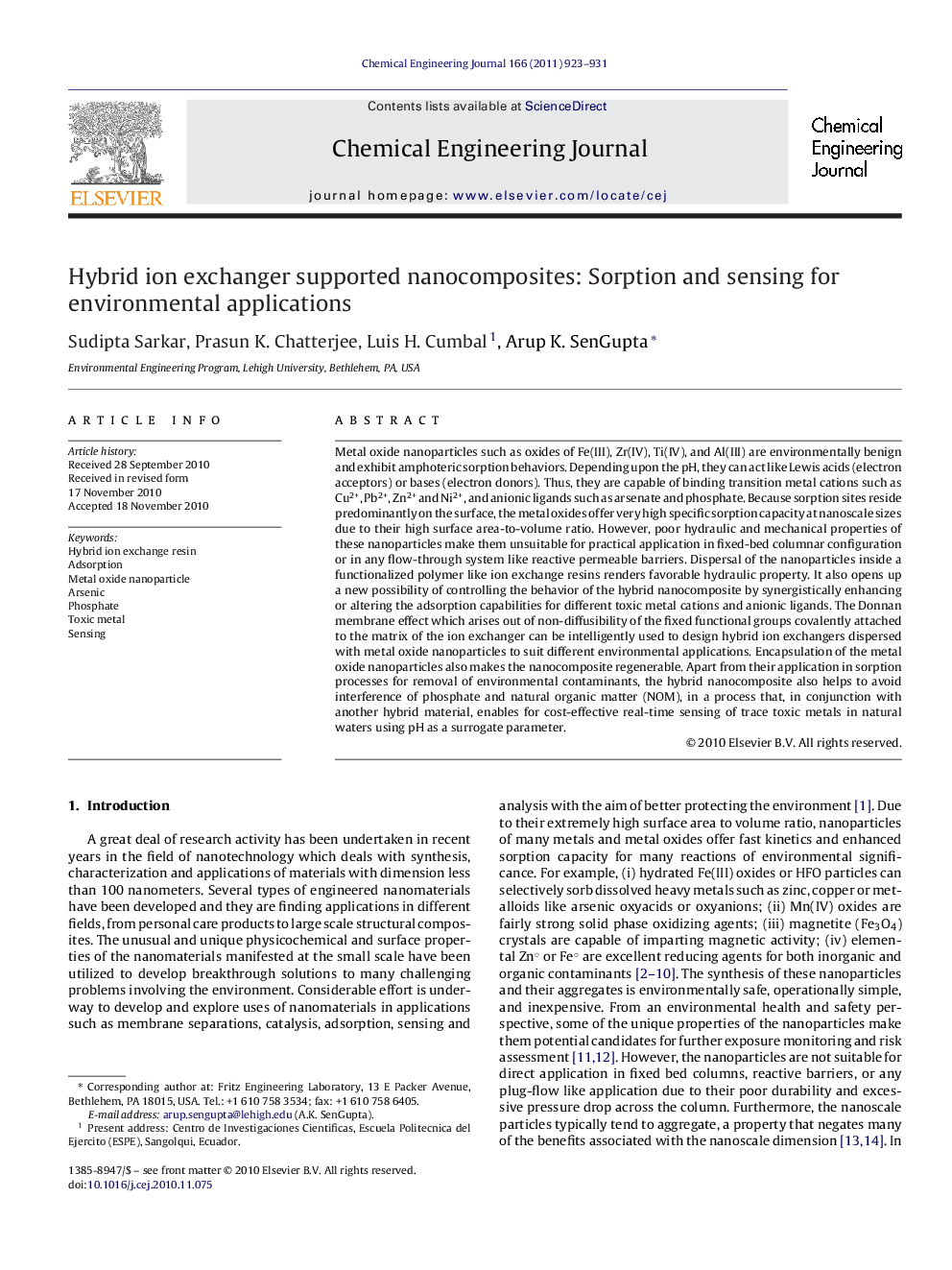| Article ID | Journal | Published Year | Pages | File Type |
|---|---|---|---|---|
| 151470 | Chemical Engineering Journal | 2011 | 9 Pages |
Metal oxide nanoparticles such as oxides of Fe(III), Zr(IV), Ti(IV), and Al(III) are environmentally benign and exhibit amphoteric sorption behaviors. Depending upon the pH, they can act like Lewis acids (electron acceptors) or bases (electron donors). Thus, they are capable of binding transition metal cations such as Cu2+, Pb2+, Zn2+ and Ni2+, and anionic ligands such as arsenate and phosphate. Because sorption sites reside predominantly on the surface, the metal oxides offer very high specific sorption capacity at nanoscale sizes due to their high surface area-to-volume ratio. However, poor hydraulic and mechanical properties of these nanoparticles make them unsuitable for practical application in fixed-bed columnar configuration or in any flow-through system like reactive permeable barriers. Dispersal of the nanoparticles inside a functionalized polymer like ion exchange resins renders favorable hydraulic property. It also opens up a new possibility of controlling the behavior of the hybrid nanocomposite by synergistically enhancing or altering the adsorption capabilities for different toxic metal cations and anionic ligands. The Donnan membrane effect which arises out of non-diffusibility of the fixed functional groups covalently attached to the matrix of the ion exchanger can be intelligently used to design hybrid ion exchangers dispersed with metal oxide nanoparticles to suit different environmental applications. Encapsulation of the metal oxide nanoparticles also makes the nanocomposite regenerable. Apart from their application in sorption processes for removal of environmental contaminants, the hybrid nanocomposite also helps to avoid interference of phosphate and natural organic matter (NOM), in a process that, in conjunction with another hybrid material, enables for cost-effective real-time sensing of trace toxic metals in natural waters using pH as a surrogate parameter.
